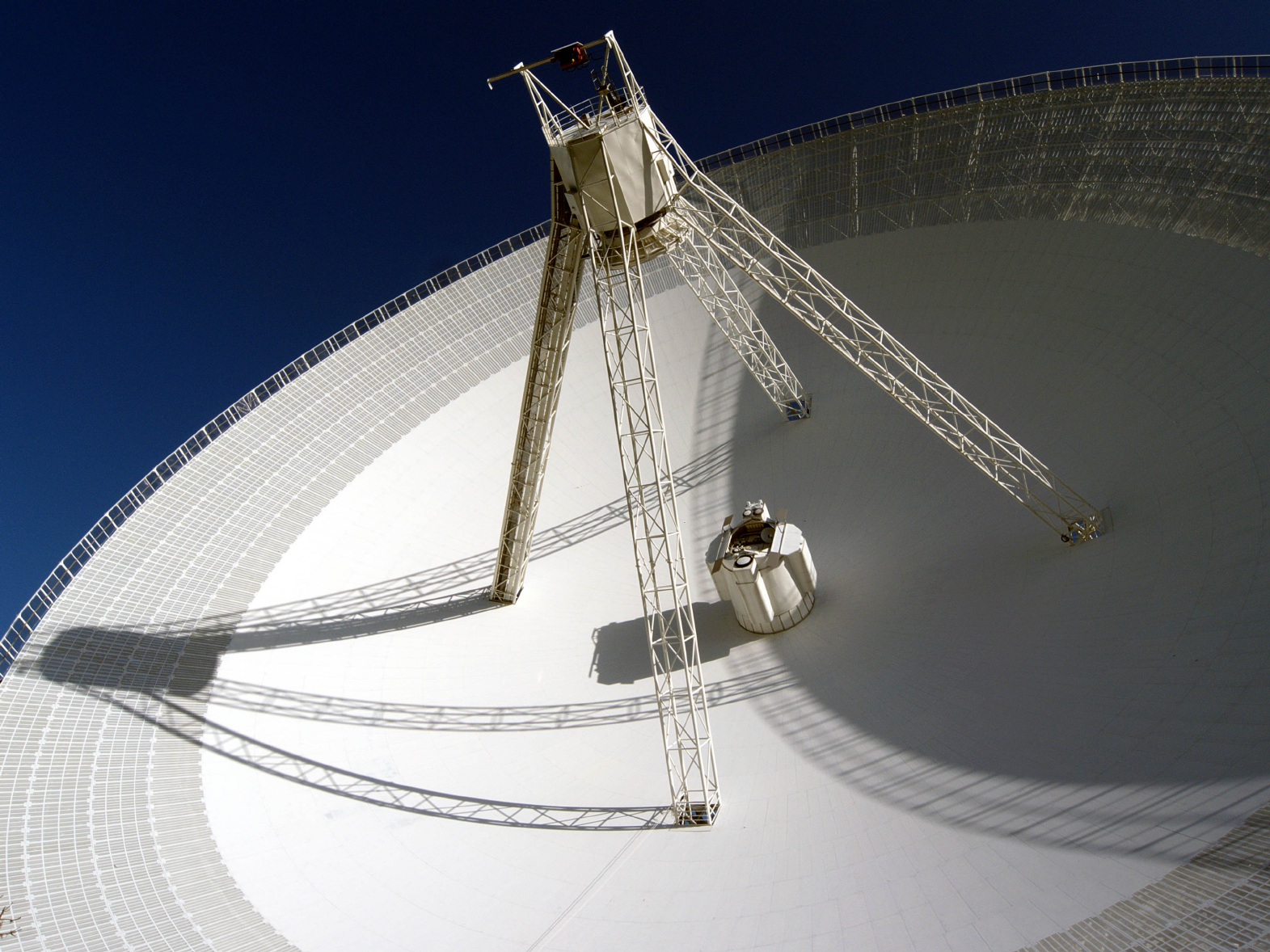Information for Astronomers
User Tools
Sidebar
This is an old revision of the document!
Table of Contents
Effelsberg User Guide
Introduction
The 100-m radio telescope of the Max-Planck-Institut für Radioastronomie (MPIfR) is located in a protected valley near Bad Münstereifel-Effelsberg. It is one of the two largest fully steerable single-dish radio telescopes in the world and a unique high-frequency radio telescope in Europe. The telescope can be used to observe radio emission from celestial objects in a wavelength range from 90 cm (300 MHz) down to 3.5 mm (90 GHz).
The combination of the high surface accuracy of the reflector (holographic measurements showed a mean 
deviation from the ideal parabolic form of ≤ 0.55 mm rms) and the construction principle of
“homologous distortion” (i.e., the reflector in any tilted position has a parabolic shape with a well-defined,
but shifted, focal point) enables very sensitive observations at unprecedented high frequencies for such a large
telescope.
The wide variety of observations with the 100-m radio telescope is made possible by a large number of receivers which are located either in the primary or in the secondary focus. Together with a number of backends dedicated to different observing modes they provide excellent observing conditions for spectroscopic observations (atomic and molecular transitions over a wide frequency range), for high time-resolution measurements (pulsar observations), mapping of extended areas of the sky, for polarimetry and participation in a number of interferometry networks (such as mm-VLBI, EVN, and Global VLBI).
This user guide should help you in proposing, preparing, executing and analyzing observing runs
at the 100-m telescope. It is continuously updated - contributions come from a number of colleagues, mainly U. Bach (general,
observations, software), R. Beck (continuum mapping), H. Hafok (software, spectroscopy) A. Kraus (general),
M. Krause (continuum mapping), and B. Winkel (spectroscopy).
In case of additional questions, please do not hesitate to contact us directly.
We are looking forward to meeting you personally in Effelsberg! Good luck with your observations,
Alex Kraus
(on behalf of the staff at the observatory)
Current Status
[status|Current Status of the observational system]
Description of the Antenna and its Facilities
How to get observing time
Acknowledge the 100-meter telescope
For a publication which made use of data observed with the 100-meter telescope, please use the following acknowledgment: Based [Partly based] on observations with the 100-m telescope of the MPIfR (Max-Planck-Institut für Radioastronomie) at Effelsberg.
Observing with Effelsberg
-
- Spectroscopic observations
Data reduction of Effelsberg observations
- For the reduction of Pulsar measurements, please contact the pulsar group in Bonn

